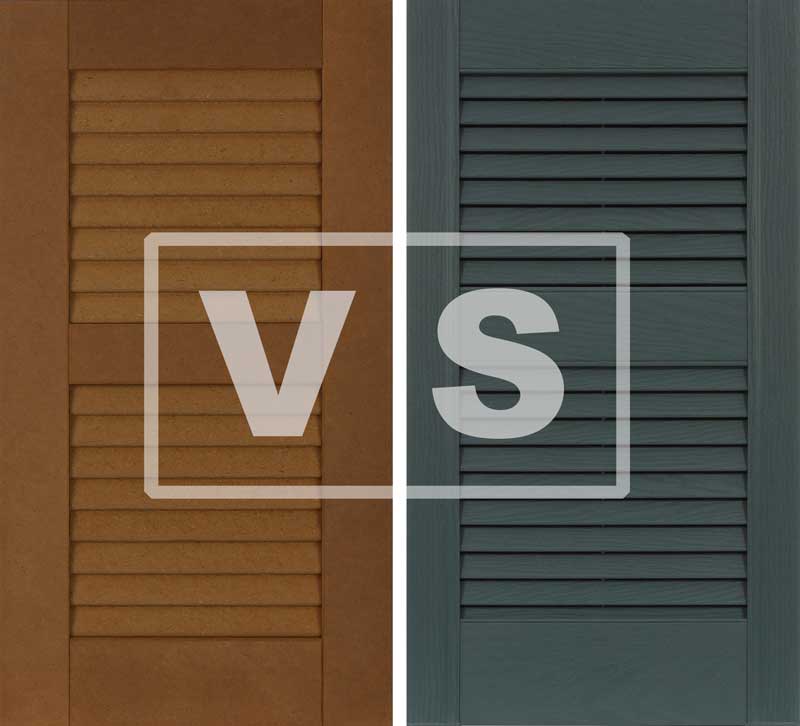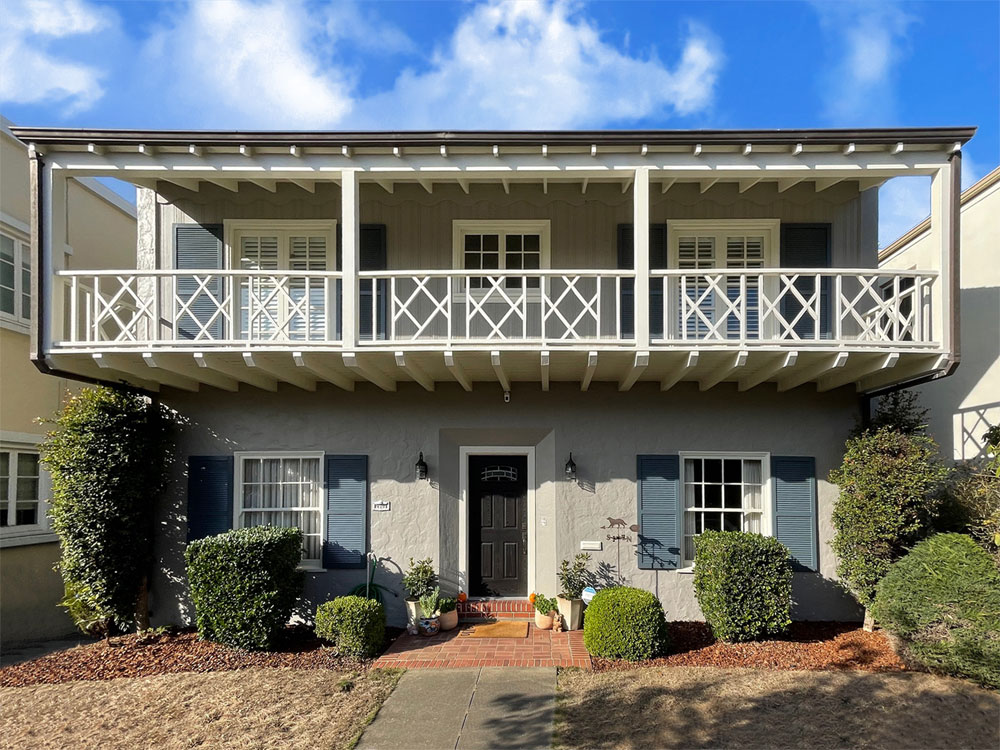Compare Exterior Shutter Materials
| Construction | |||
| Strength & Durability | |||
| Weather Resistance | |||
| Weight | |||
| Appearance | |||
| Finishes | |||
| Installation | |||
| Maintenance | |||
| Cost (ranking 1-6) | |||
| Production Time | |||
| Lifespan | |||
| Best Use | |||
| Styles | |||
| Arch Top Option | |||
Exterior shutters are available in a variety of materials, and the comparison is frequently posed to determine: composite vs. vinyl shutters. Every home improvement project has a wide variety of considerations to keep in mind when making a material or product decision. Exterior shutter selection is no different.
In short, composite produces a more solid, sturdy exterior shutter that will more closely approximate the look of wood shutters. They are usually the better choice for a project that has adequate funds and requires a more upscale appearance. However, vinyl shutters are better for budget-conscious consumers or projects where a quicker update is required.

+ Virtually impervious to moisture
+ Realistic appearance
+ Solid material
+ Cannot be installed to be functional
+ Installation brackets included
+ Lowest priced material
+ Quickest production time
+ Long-lasting with many options
+ Lightweight for easy installation
+ Low-maintenance, impervious to moisture
ShutterLand uses an innovative engineered wood product called Extira™ to construct louvered, raised panel, grooved shaker panel, and board and batten shutters. This composite material is made from 90% sustainable wood fibers held together with marine-grade resins, pressed into large, straight sheets, then cut into outdoor shutter components. It is similar to medium-density fiberboard, but it is twice as strong. This process results in exterior composite shutters that are extra durable in high-moisture climates.
Outdoor composite shutters have a more realistic appearance than vinyl. They are solid with no seams and similar component sizes to genuine wood. Louvered shutters have the most pronounced deviation from the standard because there is no space between louvers. Banks of simulated slats are manufactured to have the appearance of individual louvers. Composite louvered shutters can look realistic in the right application, but should not be used on historic restoration homes.
Unfinished composite shutters are custom-made to the ¼” and can take around 4-6 weeks to manufacture. Additional time is necessary for primed or painted shutters. This is a relatively quick turnaround for a quality custom product, but it does require some advance planning before installation can occur.
The solid material results in window shutters that weigh much more than the vinyl. They are a more sturdy option, but can be slightly more difficult to install composite shutters. It is intended that composite shutters be secured directly to the structure with the included brackets. Composite shutters cannot be installed with functional exterior hardware. But dummy hardware can be added for a more traditional appearance. Both materials only have one finished side and are not attractive on the back.
Composite does require slightly more maintenance than vinyl shutters. Exterior shutters constructed using the Extira material are available unfinished, primed, or factory-painted. We strongly recommend ordering primed or fully painted shutters because professional application ensures the best adhesion to this synthetic material. With minimal maintenance, composite shutters will remain viable for many years.

The primary advantages of vinyl shutters are the low price and the speed at which they can be obtained. They are by far the best bang for your buck in exterior home renovations, and can quickly make a significant home improvement.
Outdoor vinyl shutters are constructed from injection-molded polypropylene components with UV stabilizers. The parts are cut to length, then heat-welded and stapled for stable cohesion. There is a wood grain texture imprinted on the front surface of vinyl shutters to minimize the potential of a flat reflective glare. The thickness of the vinyl is only 1/8″, which feels insubstantial as a standalone shutter. However, these vinyl shutters gain rigidity when affixed to a building and prove quite resilient.
Vinyl components are made in limited widths and heights in 1/4″ increments up to 86 inches. There are thousands of size combinations to best match the window dimensions. The components are produced in advance and assembled to order for a fast turnaround. Vinyl shutters are not as customizable as their composite equivalent. The standard production time for vinyl exterior shutters is about 2-4 weeks. Some styles remain in stock and generally ship within 3-5 business days.
Because of their lightweight, it is very easy to install vinyl shutters. Like composite, vinyl shutters can not be installed to be operable, and they are affixed directly to the building for appearances only. The shell-like structure of vinyl shutters will not support functional hardware, yet the addition of faux decorative hardware may enhance the display.
Vinyl exterior shutters require virtually no maintenance. The color in the polypropylene material is infused throughout the shutters, and the surface is covered with protective enamel, so the color is permanent. Vinyl shutters should be occasionally cleaned to prevent oxidation, which produces a whitish film over the surface.
The best selection in the decision of composite vs. vinyl shutters is … it depends. We believe that the installation of exterior composite shutters results in a more authentic look than vinyl. But if a house needs a facelift with quick color on a limited budget, vinyl exterior shutters are a great option. Either way, the final preference will improve the exterior of a home in a significant, long-lasting way.
You may also be interested in viewing differences in vinyl vs. wood shutters, composite vs PVC shutters or wood vs composite shutters.